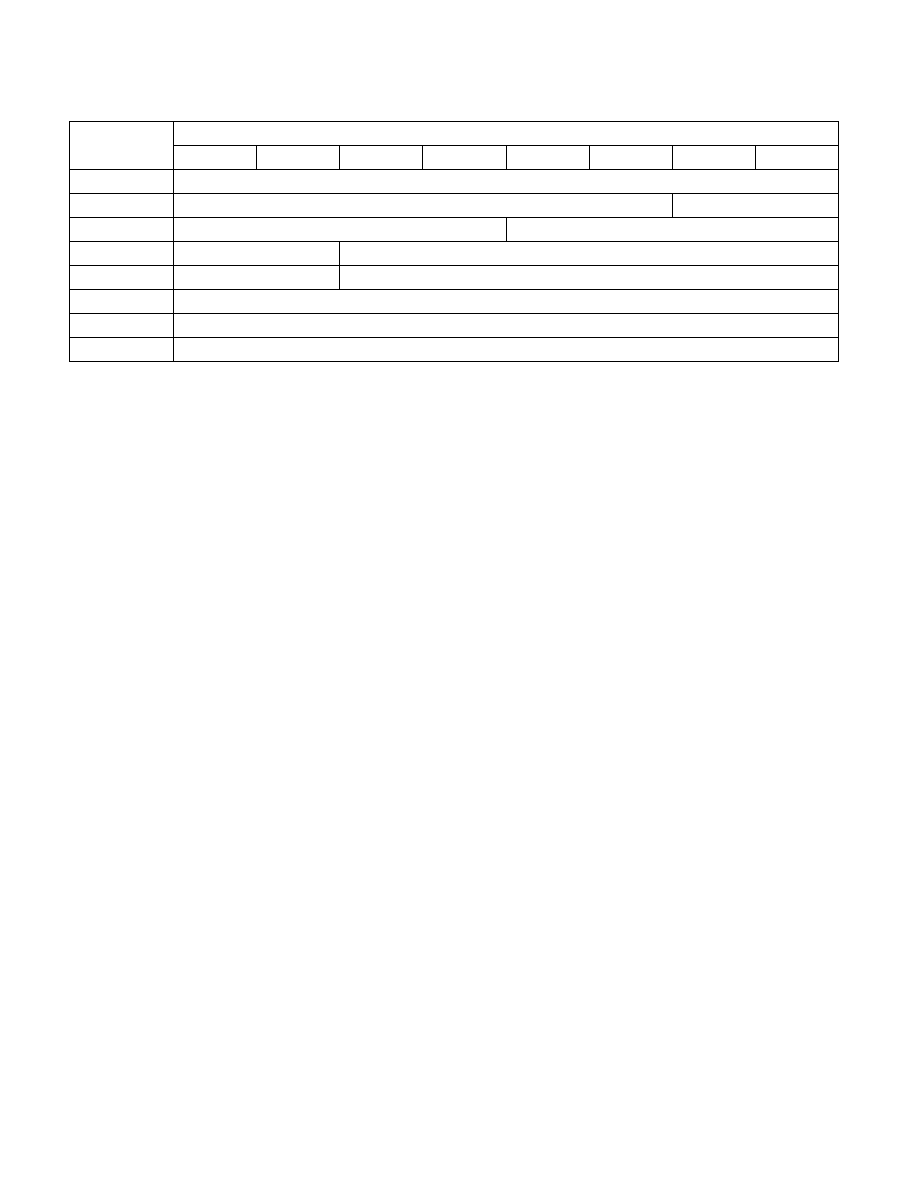
Vol. 3C 36-39
INTEL® PROCESSOR TRACE
The processor-internal Last IP state is guaranteed to be reset to zero when a PSB is sent out. This means that the
IP that follows the PSB with either be un-compressed (011b or 110b, see Table 36-18), or compressed against
zero.
At times, “IPbytes” will have a value of 0. As shown above, this does not mean that the IP payload matches the full
address of the last IP, but rather that the IP for this packet was suppressed. This is used for cases where the IP that
applies to the packet is out of context. An example is the TIP.PGD sent on a SYSCALL, when tracing only USR code.
In that case, no TargetIP will be included in the packet, since that would expose an instruction point at CPL = 0.
When the IP payload is suppressed in this manner, Last IP is not cleared, and instead refers to the last IP packet
with a non-zero IPBytes field.
On processors that support a maximum linear address size of 32 bits, IP payloads may never exceed 32 bits
(IPBytes <= 010b).
Indirect Transfer Compression for Returns (RET)
In addition to IP compression, TIP packets for near return (RET) instructions can also be compressed. If the RET
target matches the next IP of the corresponding CALL, then the TIP packet is unneeded, since the decoder can
deduce the target IP by maintaining a CALL/RET stack of its own.
A CALL/RET stack can be maintained by the decoder by doing the following:
1. Allocate space to store 64 RET targets.
2. For near CALLs, push the Next IP onto the stack. Once the stack is full, new CALLs will force the oldest entry off
the end of the stack, such that only the youngest 64 entries are stored. Note that this excludes zero-length
CALLs, which are direct near CALLs with displacement zero (to the next IP). These CALLs typically don’t have
matching RETs.
3. For near RETs, pop the top (youngest) entry off the stack. This will be the target of the RET.
In cases where the RET is compressed, the target is guaranteed to match the value produced in 2) above. If the
target is not compressed, a TIP packet will be generated with the RET target, which may differ from 2).
The hardware ensure that packets read by the decoder will always have seen the CALL that corresponds to any
compressed RET. The processor will never compress a RET across a PSB, a buffer overflow, or scenario where Pack-
etEn=0. This means that a RET whose corresponding CALL executed while PacketEn=0, or before the last PSB, etc.,
will not be compressed.
If the CALL/RET stack is manipulated or corrupted by software, and thereby causes a RET to transfer control to a
target that is inconsistent with the CALL/RET stack, then the RET will not be compressed, and will produce a TIP
packet. This can happen, for example, if software executes a PUSH instruction to push a target onto the stack, and
a later RET uses this target.
When a RET is compressed, a Taken indication is added to the TNT buffer. Because it sends no TIP packet, it also
does not update the internal Last IP value, and thus the decoder should treat it the same way. If the RET is not
compressed, it will generate a TIP packet (just like when RET compression is disabled, via
IA32_RTIT_CTL.DisRETC). For processors that employ deferred TIPs (Section 36.4.2.3), an uncompressed RET will
not be deferred, and hence will force out any accumulated TNTs or TIPs. This serves to avoid ambiguity, and make
Table 36-18. FUP/TIP IP Reconstruction
IPBytes
Uncompressed IP Value
63:56
55:48
47:40
39:32
31:24
23:16
15:8
7:0
000b
None, IP is out of context
001b
Last IP[63:16]
IP Payload[15:0]
010b
Last IP[63:32]
IP Payload[31:0]
011b
IP Payload[47] extended
IP Payload[47:0]
100b
Last IP [63:48]
IP Payload[47:0]
101b
Reserved
110b
IP Payload[63:0]
111b
Reserved